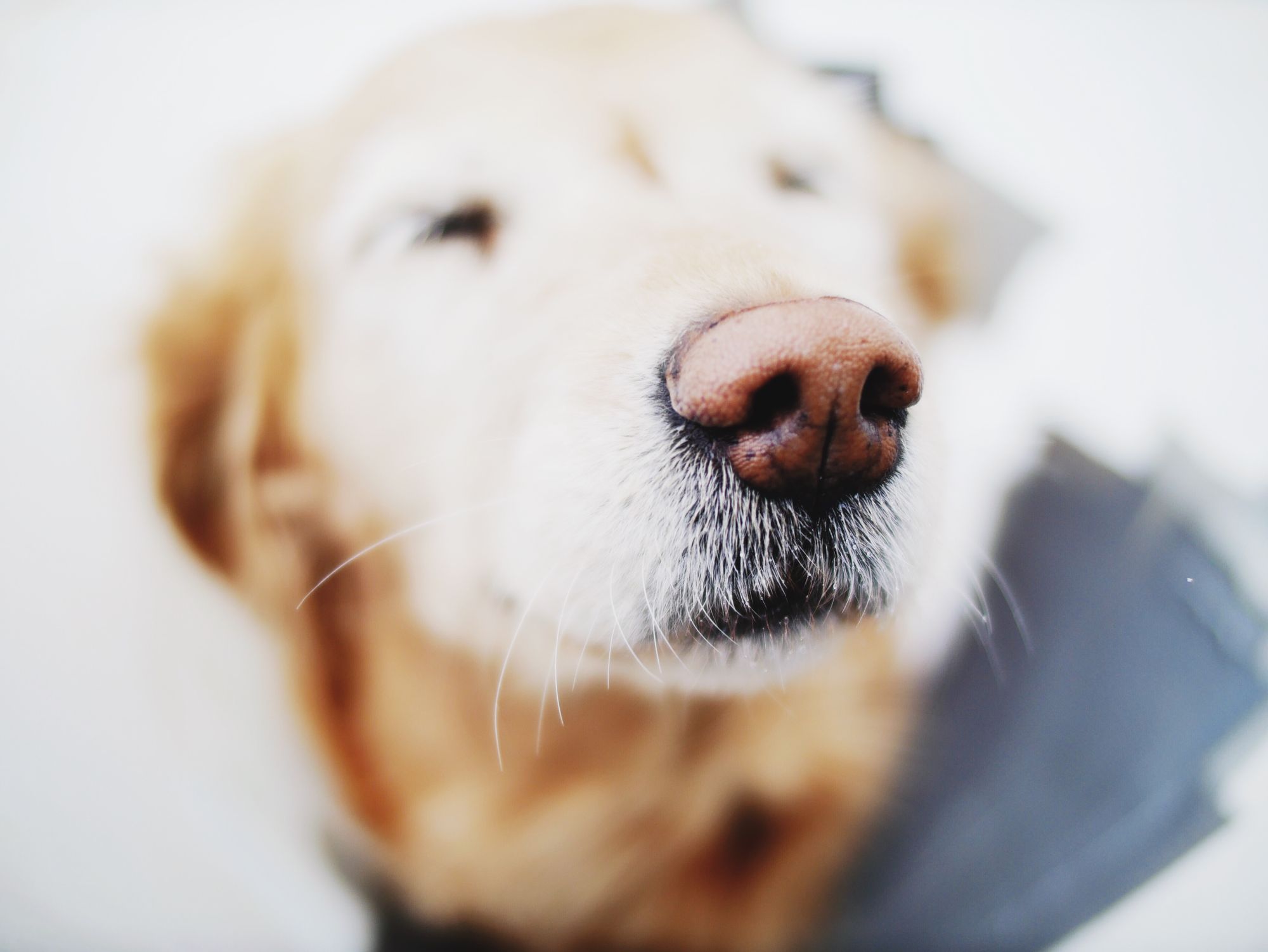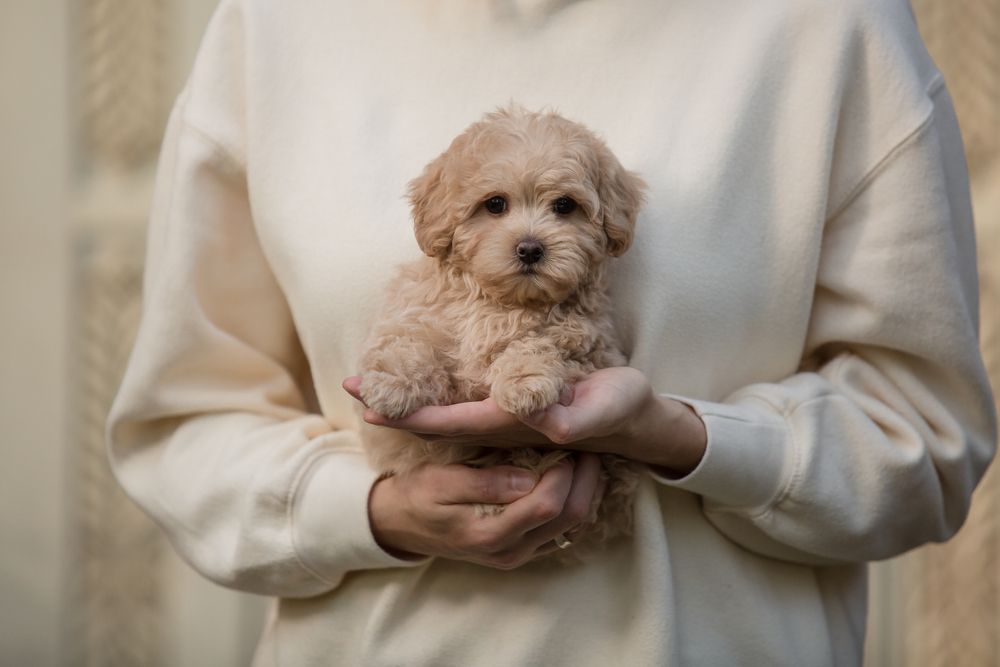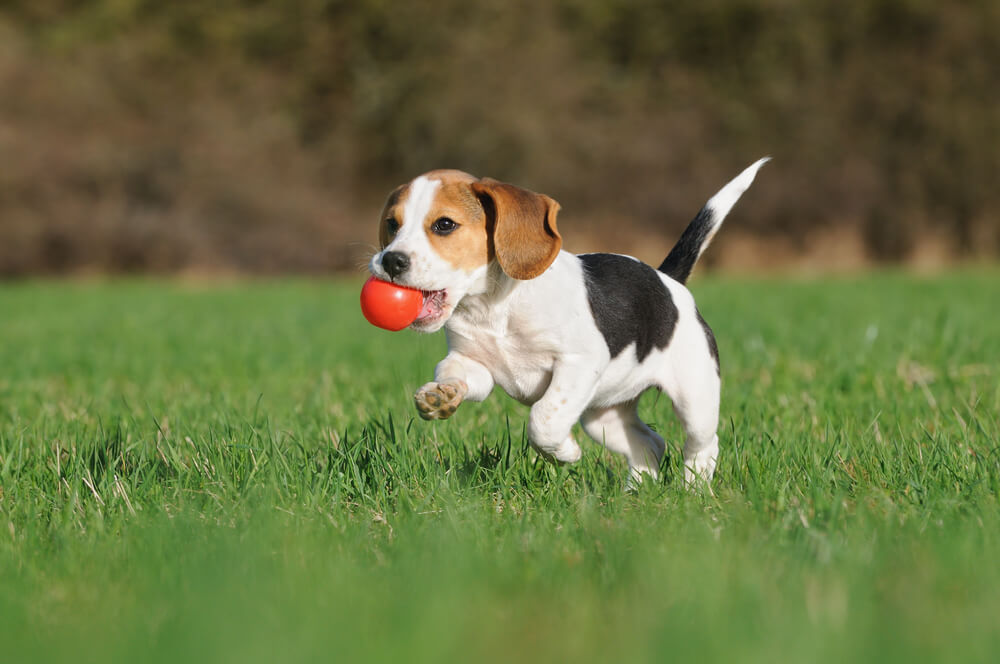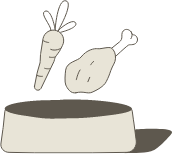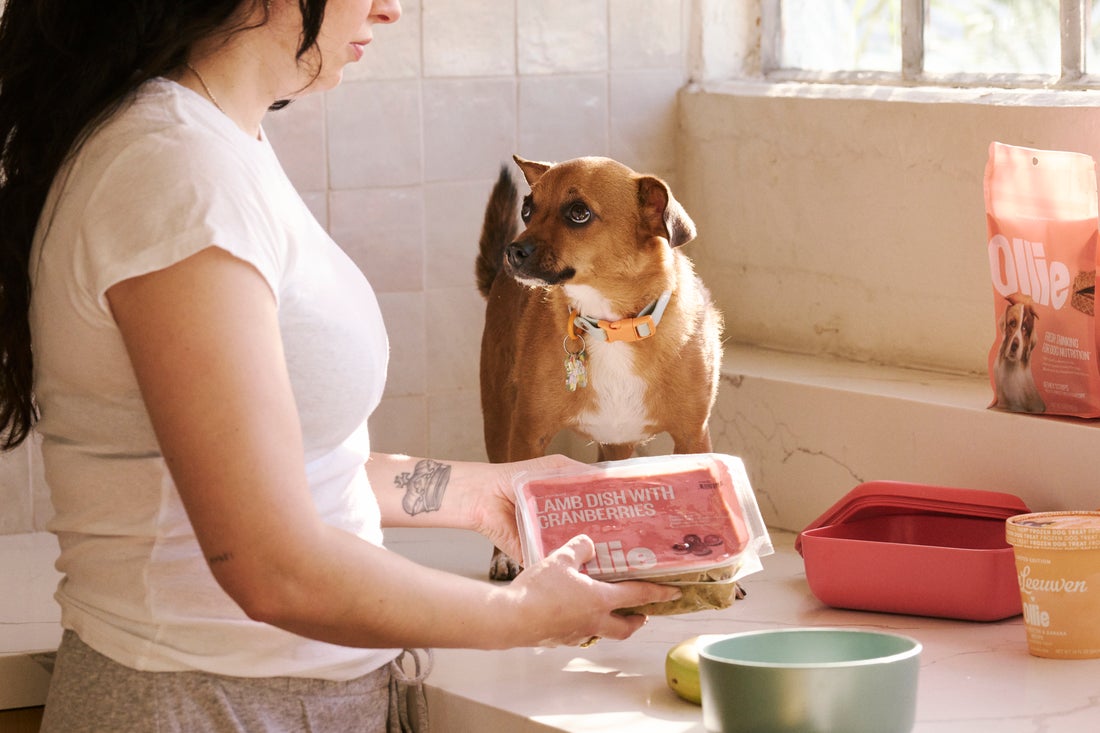Hey Ollie blog readers! We’re offering you an exclusive 60% OFF your starter box! Try now!
When you think of your dog, whiskers probably aren’t the first thing you think about but their whiskers serve a very important purpose.
We did some research to find out why do dogs have whiskers and if there were any tips for keeping your pup’s whiskers in tip-top shape.
What are whiskers?
Whiskers are the longer, thicker hairs that can be found on a dog’s chin, above their eyes and on the muzzle above the upper lip. These hairs have roots that go three times deeper than other hair on their bodies. If you touch your dogs whiskers, they might feel more wiry than the hair anywhere else on their body and for short haired dogs or those with flat coats they will be significantly longer than the hair growing anywhere else on their bodies.
One thing you won’t learn from a dogs whiskers is the dog’s age. This is because everyone from young puppies to senior dogs has them.
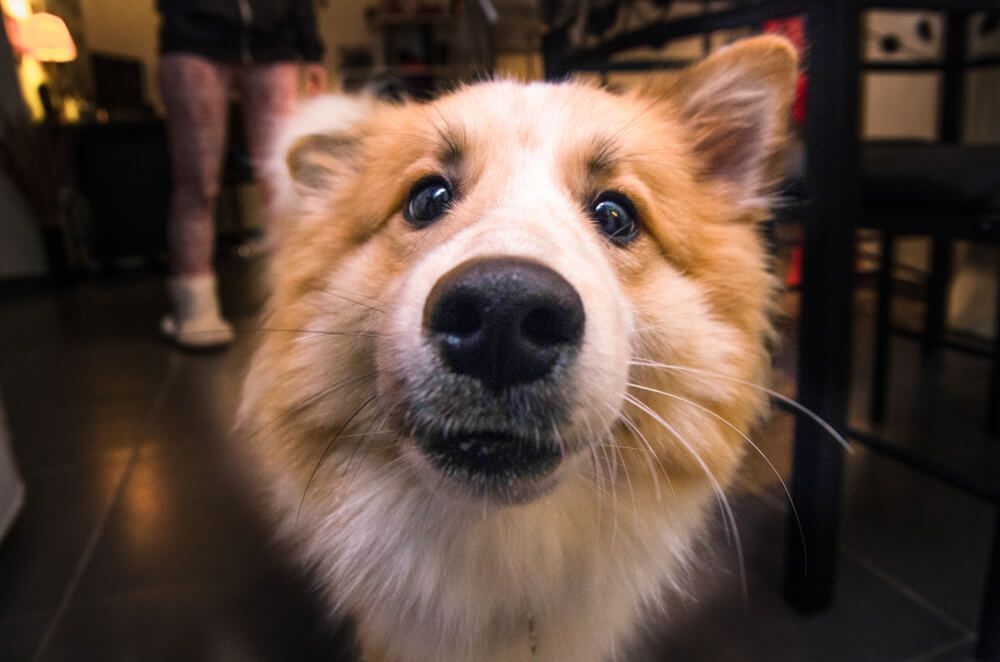
What are whiskers used for?
Your dog’s whiskers aren’t just for cosmetic purposes even though they can be pretty cute. The whiskers are used to help your dog navigate the world. They can detect objects, movement and even changes in the air. Ever see a dog try to slip through a fence that’s too tight and stop themselves? It’s probably because their whiskers felt that it was too narrow.
Your dog may also use their whiskers for communication. If a dog is happy and engaged, they may raise their whiskers making them appear happy. If your dog is nervous or senses a threat, they may flare their whiskers towards it. In addition to watching your dog’s body language when they are having a new experience or in a new place, see what their whiskers are doing. You can learn a lot from your pup’s nonverbal communication, not just when they are barking or quiet.
Do dog’s whiskers grow back?
Yes, your dog’s whiskers will grow back if they fall out. You should not pluck, trim or otherwise alter your dog’s whiskers as this can cause them to become confused.
Some groomers may trim around the whiskers which is okay but others might shorten them for aesthetic reasons but this is not recommended.
Caring for your dog’s whiskers
In most cases, the best way to care for your dog’s whiskers is to leave them alone! Don’t pluck your pup’s whiskers as this can be painful. It can also limit your pup’s ability to navigate the world, communicate, and may even increase the risk of eye injury.
This is because as debris falling in the air it may be initially detected by your pup’s sensitive whiskers. If your dog is shaking the debris off their whiskers they may also protect their eyes from impact.
So while your dog’s whiskers may only be a small part of their body and something you don’t always notice, they serve a really big purpose when it comes to helping your dog navigate the world and keeping them safe.
The Ollie blog is devoted to helping pet parents lead healthier lives with their pups. If you want to learn more about our fresh, human-grade food, check out MyOllie.com.
Tagged As:
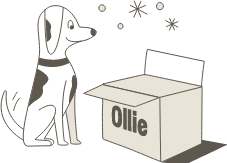
The nutrition your dog needs,
the food they want.

Enjoying our articles? Subscribe our Newsletters and get new articles directly to your inbox
You might also like
18 September 2025
5 MINS READ
Can I Rotate Fresh Dog Food Flavors?
Yes, it’s safe to rotate fresh dog food flavors, and many dogs actually benefit from the variety. At Ollie, we offer multiple fresh recipes, like Beef, Chicken, Turkey, Lamb, and Pork so you can…
by Ollie Pets
18 September 2025
5 MINS READ
Is Fresh Dog Food Safe During Power Outages?
Fresh dog food is only safe during a power outage if it has stayed cold, specifically, below 40°F. Once the temperature rises above that point, bacteria can start to grow, and the food may no lon…
by Ollie Pets
18 September 2025
5 MINS READ
How Do I Store Fresh Dog Food While Traveling?
If you’re bringing fresh dog food on the road, keeping it cold is key. The best way to store it is in a cooler with ice packs or a travel freezer. At Ollie, our vacuum-sealed fresh food stays good…
by Ollie Pets
